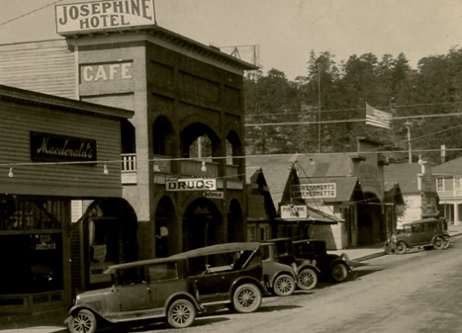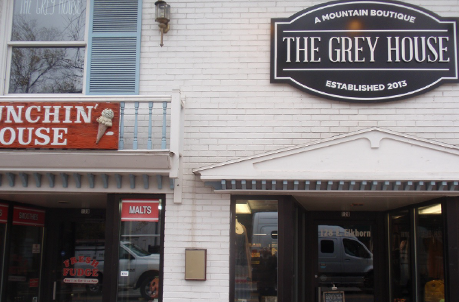The plaque plague
An unknown photographer records an undated bustling downtown Estes Park street scene way back when.
We can leave it at that, or we can focus on the ever-changing business landscape along Elkhorn Avenue, and the nosiness of Estes Park’s lone newspaper at the time, the “Trail”, to provide additional details.
According to the Trail, bare-naked bulbs serving as street lights were strung over Elkhorn beginning in May 1928. This photograph could have been taken no earlier than May 1928.
The Trail dutifully reported the arrival (in June 1928) and departure (in October 1931, to another location) of the restaurant sporting the “Pine Cone Inn” sign in the picture, located in the complex just west of the current Wheel Bar (the Josephine Hotel in the photo). The intersection of May 1928 with the closing of J.E. Macdonald’s cash and carry store reported by the Trail in April 1931 provides the initial Venn diagram overlap for when this image was obtained: Sometime between June 1928 and April 1931 (provided Norman Jeval, the new tenant at Macdonald’s, took down the old sign), an unknown photographer recorded a bustling downtown Estes Park street scene.
Given a car expert, the broad four-year date range could be squeezed tighter. This is not magic, or sleight of hand. It is basic straightforward detective work, aided by surviving copies of the Trail and the thousands of photographs taken by thousands of visitors over the years to Estes Park, compiled in a database and compared to determine “how many differences?”.
Incorrect dates added to a print years later, guided by guesswork, often obscure and confuse the issue. True believers ignore extraneous information. The photographs themselves tell their story. Estes Park has never been static, and given enough surrounding context, Estes Park’s constant change lends itself to dating most downtown photographs to the exact year. What was true in 1928 is still true today. You just have to try.
That story prompts another story. In 1992, during the 75th anniversary celebration of the incorporation of Estes Park, well-intentioned historic plaques were added to significant downtown landmarks. The former location of the Pine Cone Inn, more familiar as the still extant two-story southern façade that served as the long-time home of the Old Plantation restaurant, was marked with such a plaque.
The Porter and Burgess families were the founders of the Old Plantation, and I remember talking with Harriet Burgess in the late 2000s about the plaque, especially regarding the wording on the plaque, which troubled her because the author spent more time focused on the Pine Cone Inn, which was not the first business at that location, not even the first restaurant at that location, instead of the beloved institution that replaced the Pine Cone Inn in December 1931, still in operation and still in the same hands at the time of the town’s anniversary celebration in 1992.
A recent photograph of the plaque shows how Harriet obtained her revenge. The placement of the plaque directly under a stream of rain and melting snow has washed it clean of text, turned it into a blank slate offering Estes Park a second chance to report its history.
A modern footnote addressing the wisdom of legitimizing the antebellum South, of creating nostalgia for a problematic culture in a state added to the Union well after the war, would merit consideration. That was a different time, with the Old Plantation hardly the lone Colorado or Estes Park offender.
Instead, the body of the text would include iced tea, sparkling conversation, special memories shared between vacationing grandparents and grandchildren, a mouth-watering menu, the smell of just-baked pie drifting from the kitchen.
If you’ve lived here long enough, or visited here often enough, consider yourself lucky to have been a part of the few things in Estes Park that never changed.




Comments
Post a Comment